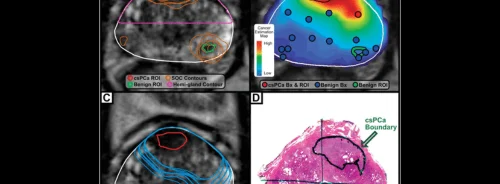HealthManagement, Volume 6 - Issue 4, 2006
Experiences of a Department Head
Author
Dr. Gyongie Nagy
Head of Department of
Diagnostic Radiology
CountryHospital
Zalaegerszeg
Hungary
As Head of the department of radiology since 1992 at the County Hospital of Zalaegerszag, I am part of a large hospital with a total staff of 1700 that is responsible for the medical care of a region that numbers 301,000 inhabitants and covers a territory of 3784 km2. There are 37,000 inpatients per annum, and one million outpatients. A progressive policy towards medical care in the county means that there are three additional subordinated town hospitals in the county. In the department of radiology, we aim to create a structured and transparent healthcare service that benefits from proactive working collaborations with other clinical partners, which is also extended to educational and scientific activities.
Technical Development
In 1992, the hospital was privileged to receive investment to purchase brand new radiological equipment including dual-slice CT and 1,5T MRI devices. Four ultrasound machines (two of them with colour Doppler, one with breast specifications) are also available.
Organisation of Staff
Subspecialist head radiologists and radiographers are spread over eleven divisions. Others are rotated with partial overlapping to preserve multifunctional skills. Six radiologists carry out diagnostic and interventional DSA, ten doing CT, seven doing MRI and four responsible for breast examinations. Neuroradiology and paediatric radiology divisions are staffed by board certified subspecialist radiologists. Clinico-radiological teams are brought together once a week to discuss areas such as gastrointestinal, breast, and oncological subjects. In our department, clinicians are focusing on a holistic approach to diagnostic problems rather than taking a narrower view of particular modalities. The most appropriate modality for each clinical question is decided by the radiologists based on cost-risk-benefit estimation. Imaging modalities that are to be applied to each particular diagnostic strategy are discussed with the nuclear medicine team as well. A variety of ultrasound investigations, like transcranial and carotis Doppler, gynaecology and obstetric exams, echocardiography and cardiologic catheterisation are carried out by clinicians using equipment from their own individual departments. Scientific activities are also dealt with by clinico-radiological teams. Twice a week we have set up radiological journal referees by our staff members. Educational meetings are also held weekly for our residents in training. This year the national meeting of radiology residents was organised by the Zalaegerszeg staff.
Quality Control
Since 1996, quality control in our department is based on ISO 9001:2000 certification. Twice a year administrative and practical audit procedures take place. Good collaboration with hospital management and with both regional administration and health authorities promote a financial balance that make it possible to run US, breast, CT, MRI and DSA in two shifts with daily scheduled patient numbers of fifty in CT and forty-five in MRI. During the night urgent investigations are dealt with by one radiologist and two radiographers on duty in hospital and on call support of subspecialists is available for example in case of cholecysta drainage. Morning meetings of the fourteen radiologists offer the chance for reevaluation of the cases as they develop during the night.
Teleradiology
Teleradiology from home is not yet available here, however via the hospital, we have in place a system to obtain second opinions from university centres and national institutions on difficult cases. Clinico-pathological meetings and regular smaller follow-up meetings of cases with retrospective reevaluation help decrease misdiagnoses, mistakes and errors. There are study protocols and regular meetings for revisions, where radiographers also participate. We also hold postgraduate educational meetings for radiographers.
Challenges Facing the Department
The National Insurance Reimbursement Policy is the main problem faced by department management in recent years, restricting the upgrading of equipment and general development of the department itself. Also, since department regulations are not standardised and are frequently changed, it is impossible to create a true longterm strategy. Unfortunately restrictive financial support have resulted in significant limitations in the provision of diagnostic and therapeutic care this year in Hungary, something which looks unlikely to change in years to come.
However, working with available technological and human resources, we have managed to create an organised and systematic process which allows the best possible patient care we are able to provide, despite limitations.





